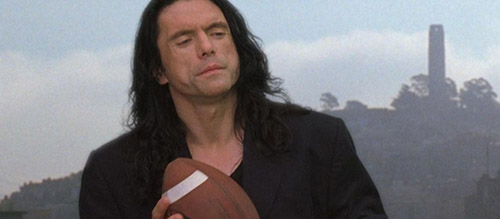“So Bad It’s Good” Revival
Welcome to the revival of “So Bad It’s Good”, a The Film Magazine feature series formerly presented by Jack Gooding.
During its original run, the So Bad It’s Good series featured reviews of 7 movies that met the mark of being so bad that they’re kind of fun to watch. As a bad movie connoisseur, I [Jacob Davis] feel like a natural fit for the position, and I hope to live up to the expectations set by the existing reviews. But, before continuing such an exhilarating legacy, I want to outline my personal beliefs about what it means for a film to be “so bad it’s good”.
In order for a film to be “so bad it’s good”, it must meet two self-evident criteria.
“So bad” refers to the fundamental aspects of filmmaking (cinematography, editing, writing, acting, sound design, mise-en-scene) failing to align with the viewer’s standards for quality. This will be relative to a viewer’s experience with “bad” movies, since the films with the widest releases are going to meet some level of industry standard. If Attack of the Clones, The Emoji Movie or The Fanatic falls into an individual’s canon of “bad” movies, it’s safe to say that they are either selecting relatively well-known films, or that they have little experience with the true dregs of cinema.
There are certain rules that do have to be followed when telling a story through film – even the most bland Hollywood movie is going to be competently edited, keeping the viewer’s senses of time and space in a logical order. Films like The Snowman or Slender Man are so memorable because of their poor editing. Entire scenes are missing from the films, which cause characters to leave abruptly and the pacing to be ruined entirely. Films can certainly break rules, but if the action is indecipherable or the film moves between medium, frame sizing or style without reason, it’s going to turn out wrong. Improper editing is frequently featured in the field of “so bad it’s good”.
“It’s good” is contingent upon the viewer’s subjective enjoyment of the film and is dependent upon that enjoyment being derived from its poor quality.
The pleasure may come from making fun of it, or marveling at the audacity of the filmmakers to commit these images or ideas to screen. The filmmaker’s apparent intention is paramount when deciding whether or not a film is “so bad it’s good”. The Toxic Avenger or Thankskilling may be terribly conceived and constructed, but they come across as intentionally bad films that aim to mimic the B-movie style (poorly), rather than being a consequence of naivety, ignorance or arrogance. Additionally, these particular films show how problematic social elements (like casual sexism being intentionally played for laughs) can interfere with enjoyment. It’s fun to rip on movies with bad morals that come from a place of genuine belief, but it’s not so fun when the rest of the movie is amoral.
There’s a lot of value in watching these films…
Deconstructionists point out that in the dichotomy of “presence” and “absence” we tend to place a greater value on presence. In film, the “presence” of “good” filmmaking can be found in the classics – Citizen Kane, 2001: A Space Odyssey and Vertigo are go-to examples for how to properly use the medium of film to tell a story. Of course, we’re so used to seeing films that generally follow the guidelines of “good” filmmaking that it can become difficult for anyone to be able to discern “good” from “bad” on their own. This is the value of “absence” in filmmaking – when you watch a movie that blatantly sucks, it’s easier to pick up on the qualities that distinguish it from a “good” movie.
The Room is the quintessential “so bad it’s good” movie. Anyone who watches it can pick up on the miserable ADR, sudden bursts of pointless and self-aggrandizing narrative, and absolute ignorance of its visual storytelling. Afterwards, watch some famously “bad” movie like 2019’s The Fanatic. You’ll notice there’s a difference in the composition of images, the use of space and framing, or the fact that John Travolta’s words match his lip movements at an appropriate audio level. Details like this are taken for granted in “good” films, and can be lost on a public that still can’t differentiate between the Oscars for Sound Mixing and Sound Editing.
“So Bad It’s Good” will dive into the “what”, “how” and “why” of the film’s badness and enjoyability in order to determine whether or not a film qualifies for the titular honor. I’ll highlight key scenes, negative motifs, and speculate on what – if anything – could have made the movie “good” instead.
Edutainment has never been so awful, and I hope you gain something from this series.



